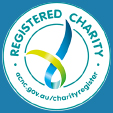More than 63,000 Western Australians are living with COPD. Concerningly, around half of those affected are undiagnosed, which means they may not be receiving the support, treatment, and guidance they need to manage their condition and maintain a good quality of life.
If left undiagnosed or untreated, COPD can affect everyday activities, sleep, and the ability to stay active. Symptoms can vary from person to person, but common signs include:
- Shortness of breath (breathlessness)
- Wheezing
- Coughing
- Tiredness
The good news is that early diagnosis and treatment can greatly improve symptoms and quality of life.
Our team of respiratory health experts help Western Australians with COPD through specialist care, diagnosis, education and practical resources — supporting them to breathe easier and enjoy the best possible quality of life.


